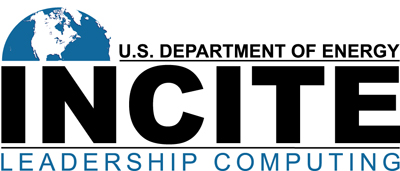Sandia researchers awarded more than 65 million supercomputing simulation hours by DOE INCITE program
By Mike Janes

Two projects led by researchers at Sandia’s Combustion Research Facility (CRF) and Computer Sciences and Information Systems Center have been awarded 65 million hours on two DOE supercomputers through DOE’s Innovative and Novel Computational Impact on Theory and Experiment (INCITE) program. The research projects utilize two world-leading supercomputers with a computational capacity roughly equal to 135,000 quad-core laptops.
“The Department of Energy’s supercomputers provide an enormous competitive advantage for the United States,” Energy Secretary Steven Chu said when the awards were announced. “This is a great example of how investments in innovation can help lead the way to new industries, new jobs, and new opportunities for America to succeed in the global marketplace.”
Awarded on a competitive basis, many of the new and continuing INCITE projects aim to further renewable energy solutions and advance understanding of the environmental impacts of energy use. The program, open to all scientists, is supported by DOE’s Office of Science and managed by the DOE Leadership Computing Facilities at Argonne and Oak Ridge national laboratories, which host some of the world’s fastest supercomputers.
INCITE projects could help speed the development of more efficient solar cells, lead to improvements in biofuel production, and help identify more effective medications to slow the progression of Parkinson’s disease.
This year’s INCITE awards are the largest-ever awards of the department’s supercomputing time. A total of 1.7 billion processor hours were granted to 57 innovative research projects that will use computer simulations to perform virtual experiments that in most cases would be impossible or impractical in the natural world.
Joe Oefelein (8351) is the principal investigator on “High-Fidelity Simulations for Advanced Engine Combustion Research,” with his colleague, Jackie Chen (also 8351), serving as co-investigator. Joe and Jackie were awarded 60 million hours on the Cray XT5 (“Jaguar”) machine at Oak Ridge National Laboratory.
Their project aims to provide new insights into the dynamics of turbulent combustion processes in internal combustion engines, and to maximize the collective benefits of those insights through collaborations among the researchers involved.
David Evensky (8966) is principal investigator for “Trace Collection for Simulation-Driven Co-design of Exascale Platforms and Codes.” Curtis Janssen (8953) serves as co-investigator. The project was awarded 5 million hours on the IBM Blue Gene/p (“Intrepid”) machine.
Their project focuses on “exascale” computing and is the validation part of a larger effort to help researchers co-design applications, runtimes, and systems for future exascale computing, considered the next great leap in size for computers.
A third Sandia researcher, Mark Taylor (1442), is participating in two other proposals that were granted 110 million and 35 million hours. Mark is a co-investigator on “Climate-Science Computational Development Team: The Climate End Station II,” led by the National Center for Atmospheric Research, and on “Numerical Study of Multiscale Coupling in Low-Aspect Ratio Rotating Stratified Turbulence,” led by Los Alamos National Laboratory.